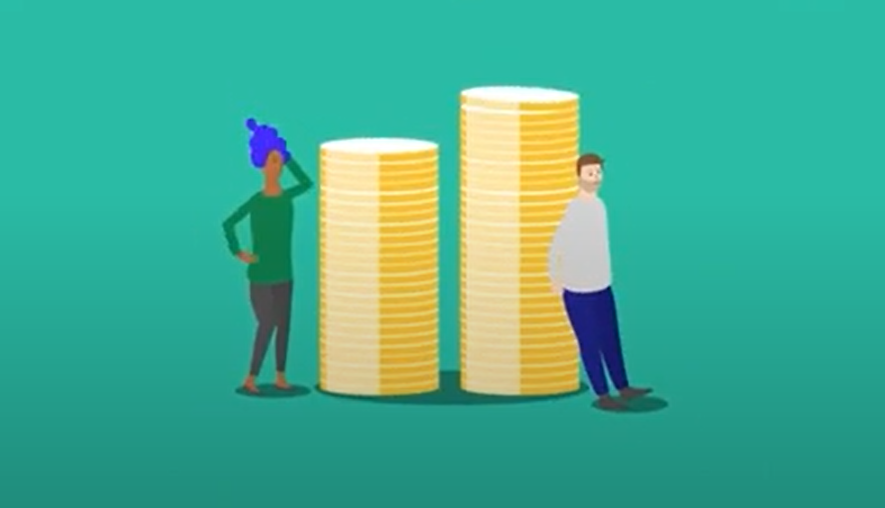Where is the income gap stat taken from?
Employer data is analysed each year by the Office for National Statistics (ONS). Their ‘Annual Survey for Hours and Earnings’ shows that
- In the 18-29 age range, young men’s total average annual earnings are £21,582
- For young women this figure is £17,388
- The difference is 19%
As the age range increases, the income gap for women widens:
- Age 30-39, it is 26%
- Age 40-49, it is 32%
- Age 50-59, it is 34%
This means that women earn increasingly less than men throughout their lives which is why the income gap needs to be addressed.
The gap starts early but grows as women get older. On average, a woman will earn a fifth less each year than a man of the same age.
Claire Reindorp, CEO Young Women’s Trust
Causes of the income gap
Exploring further, the causes of the income gap in the 18-30 age range include:
1. An hourly pay gap
Around 3% of the income gap is due to an hourly pay gap between young men and young women. This in itself has many causes including young women falling into low-paid sectors, women’s work being less valued, pay discrimination and young women struggling to progress.
Young Women’s Trust’s annual survey supports this:
• 24% of young women who took part in our survey had direct experience of being paid less than male colleagues to do the same or similar work and 42% had experienced discrimination.
• More than 1 in 10 HR decision makers also told us that they were aware of women being paid less than men for jobs at the same level in their organisation.
• A third of HR decision makers were aware of instances of young women being discriminated against in the workplace over the previous 12 months.
• 1 in 10 HR decision makers still think men are more suited to senior management roles than women.
2. Working fewer hours
The remainder of the income gap is due to young women working few hours – this impacts them in 3 ways because
- they get less take home pay
- they average around 20% less pay per hour for part-time work and
- over the longer term, part-time working affects progression and therefore future pay.
Why fewer hours?
The reasons why young women work fewer hours are likely to include:
- 20% of 18 to 30-year-olds are mums.
- Young women take on higher levels of unpaid work. Anecdotal evidence suggests that there are different expectations on young men and young women to help with domestic work and care for siblings or relatives.
- Around 10% more young women go on to higher education than young men. While this in itself is positive, we know that studying leads to debt and there’s no sign that the greater numbers of female graduates leads to women being paid more than men post-graduation.
- Young women in full-time jobs are working fewer hours per week than young men who are working full time. We don’t know why this is. It may be due to wider pressures of unpaid work on young women restricting their full-time hours. Or it may be down to the different kinds of jobs young men and women do.
How to address the income gap
We are asking employers to take the following steps to help address inequalities:
- Don’t ask candidates for previous salary history. This action can all lead to young women being trapped in low-paid roles.
- Review and publish gender pay gap data. Start recording pay gaps by age band and ethnicity if you don’t already. Then put in place targeted action plans to improve pay equality.
- Where roles are flexible – can be done as a job share or are part-time or home-based, include this information clearly in job adverts.
- Provide meaningful development opportunities for young women and offer mentoring and support to help them reach their potential. Monitor the development of young women to assess the impact of these plans.
- Set up or encourage networks for young women.
- Ensure that workplaces are accessible and inclusive, invest in diversity and inclusion training for staff, tackle discrimination head on and develop clear flexible and hybrid working policies which are responsive to individual circumstances.



